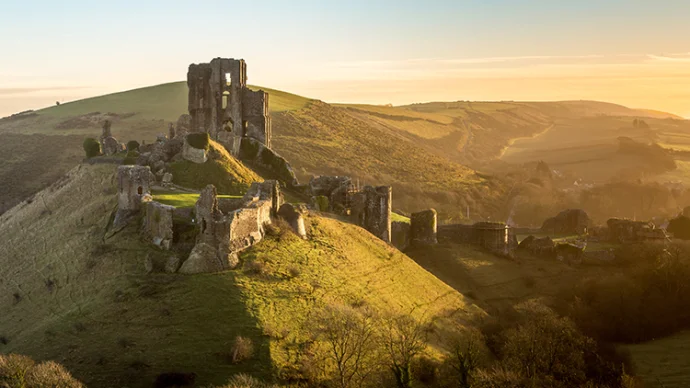
About Offa’s Dyke
Offa’s Dyke is a large earthwork named after Offa, king of Mercia between 757 and 796 AD, traditionally regarded to have ordered its construction.
History of Offa’s Dyke
Construction of what is known as Offa’s Dyke may have begun much earlier than the reign of King Offa. The linear earthwork, which more or less follows the border between modern England and Wales, may have been under construction during the sub-Roman period.
Most of its construction is generally attributed to Offa. It’s uncertain what the structure represented, but it does not appear to represent a mutually agreed boundary between the Mercians and the Kingdom of Powys.
The Dyke has a ditch on the Welsh side, with the displaced soil piled into a bank on the Mercian side. This resembles a design consistent with a protective earthwork, intended to protect Mercia against raids from Powys or alternatively as a symbol of Mercia’s ambitions in the region.
Radiocarbon dating of redeposited turf on the Dyke resulted in dates which ranged from 430 to 652 AD in one section, and 887 to 1019 in another. These results confirm that the bank is post-Roman and was developed at different times.
Offa’s Dyke today
Offa’s Dyke is a scheduled monument. In the town of Knighton, there is a purpose-built information centre called the Offa’s Dyke Centre.
The Offa’s Dyke Path is a long-distance footpath that follows the remnants of Offa’s Dyke along the Wales-England border. The path was opened in 1971 and stretches for 176 miles (283 km) from Sedbury on the Severn estuary to Prestatyn on the north coast of Wales.
Getting to Offa’s Dyke
Walking the entirety of the Offa’s Dyke Path takes about 12 days to complete, passing the ancient monument and natural features such as Clun Forest, Eglwyseg moors and the Clwydian Range.
A popular section of the Dyke can be accessed along the River Wye from Chepstow, while the market town of Knighton further north hosts the Offa’s Dyke Centre.
Featured In

Herefordshire Historic Sites
Discover cidermaking history and timber frame architecture at Herefordshire's best historic sites

Historical Hikes in England
These spectacular routes, which include both short circuits and multi-day treks, bring hikers close to ancient ruins and historical landmarks.




















